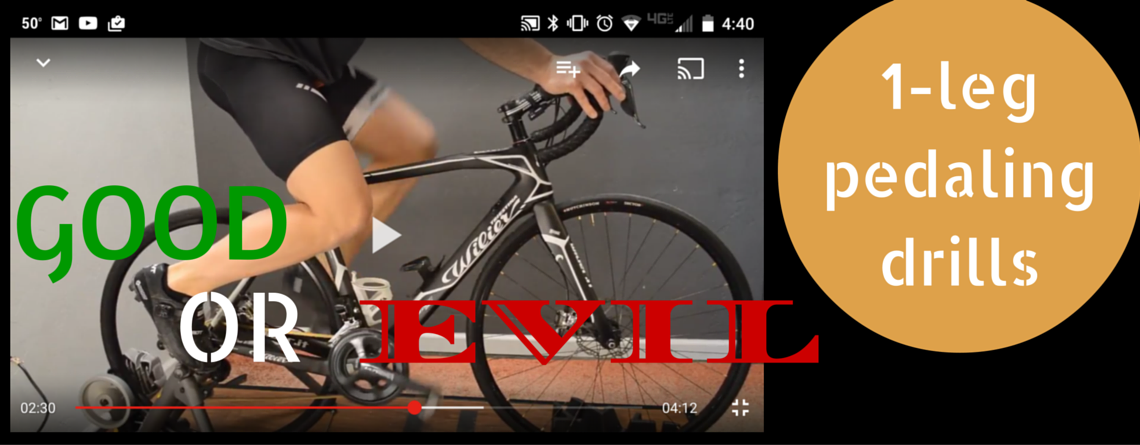One-leg Pedaling Drills: Good or Evil?
https://youtu.be/vG8PYS18KUkOne-leg pedaling drills done on the stationary cycling trainer have gotten a bit of a bad rep I think, primarily because the were misused and their purpose misplaced.About 10-15 yeas ago, after reading a research article or two that pointed out how all cyclists exert a negative torque or force on their cranks on the back side of the pedal stroke -- the recovery end of the stroke -- someone decided that we needed to fix that and therefore focusing on pulling up on the back of the pedal stroke became 'the thing' to do.There was a lot of focus on reducing that negative force by training the hip flexors to more effectively pull up and many cyclists and triathletes began turning to one-leg pedaling drills. Seeking more endurance and strength out of the hip flexors, riders performed progressively difficult strength building sets.Well, surprise surprise, turns out it doesn't work that way. The hip flexors aren't made to act in this way, so all it did was cause a bunch of cyclists to waste energy and be less efficient.So are one-leg drills evil? Just a waste of time?Actually, I would argue that they're not.....as long as they're done correctly. Why?Well, many of us can see that there is some benefit to using clipless pedal systems, correct?Yes, I know that there are research studies showing no difference in efficiency or power output between clipless and platform pedals, but as with all studies, the good ones are only looking at a very narrow set of circumstances.Can we make the argument then that there's no difference in all cycling scenarios between clipless and flats? I think that's a pretty steep hill to climb....know of many professional cyclists (in any discipline) that are willing to give up their LOOKs or SPDs for flats?I don't think you'd get many takers.So there clearly is something to using clipless....but what is it?I believe that there's an element of coordination, especially at the ankle, that provides the benefit...and it occurs in such a way that having your feet attached to the pedals is necessary.I get asked a lot by my bike fit clients when they should drop their heel in the pedal stroke? At what part of the pedal stroke do they lift the heel and how do they coordinate it?Consciously trying to control this coordination is usually not worth the effort....I think it's best for you to "ankle" and pedal in the most effective and natural way possible without having to think about it.I think the one leg drills can help you do this. When you get better at them and more coordinated, your ankle is going to move the way it ought to....for you.

